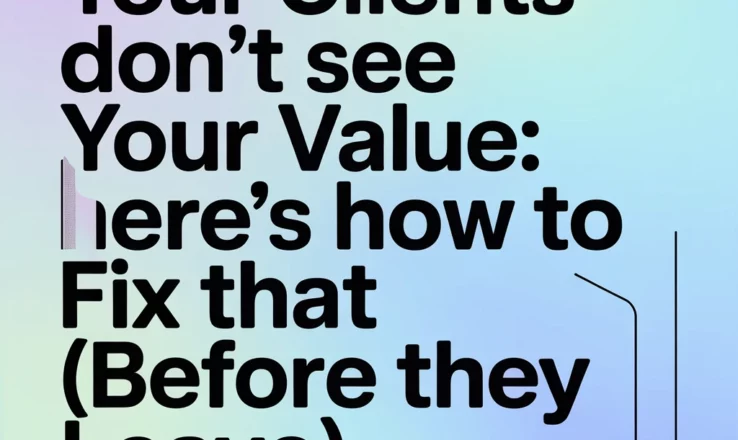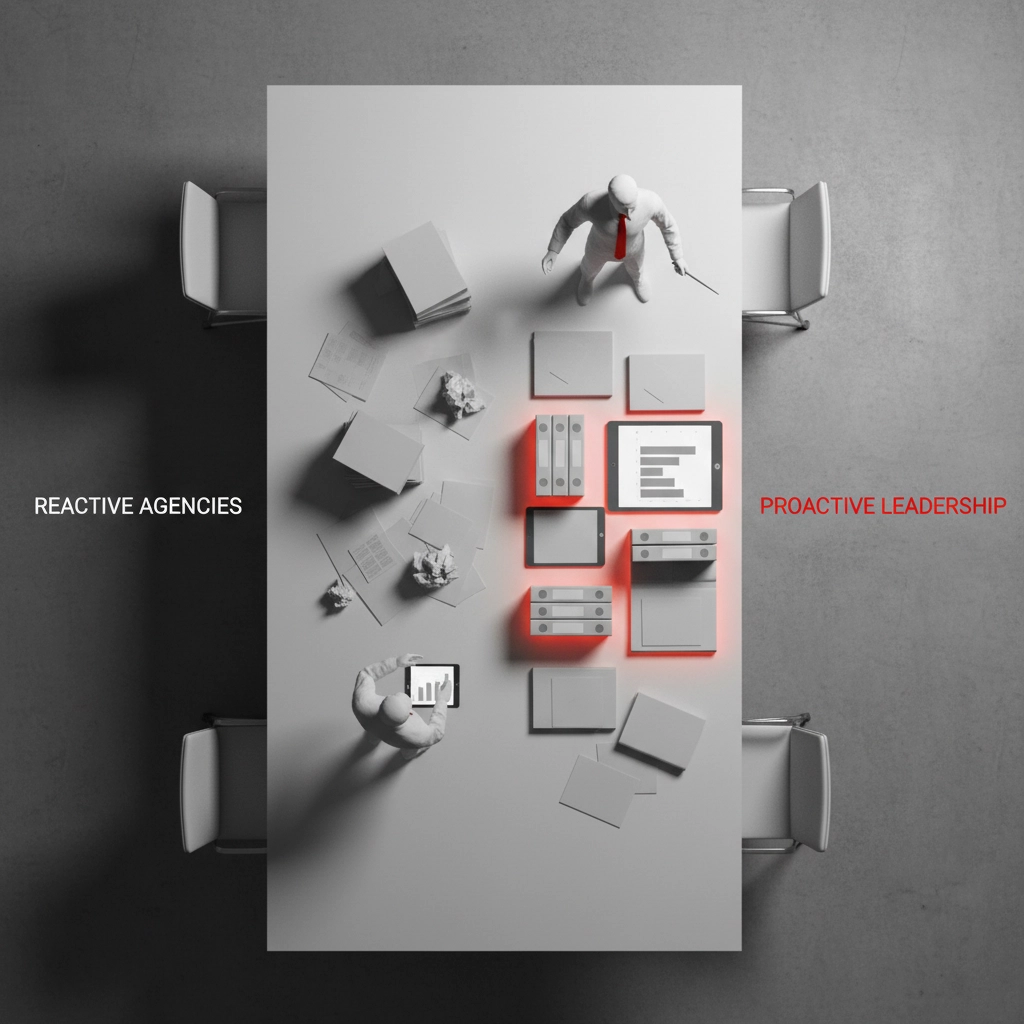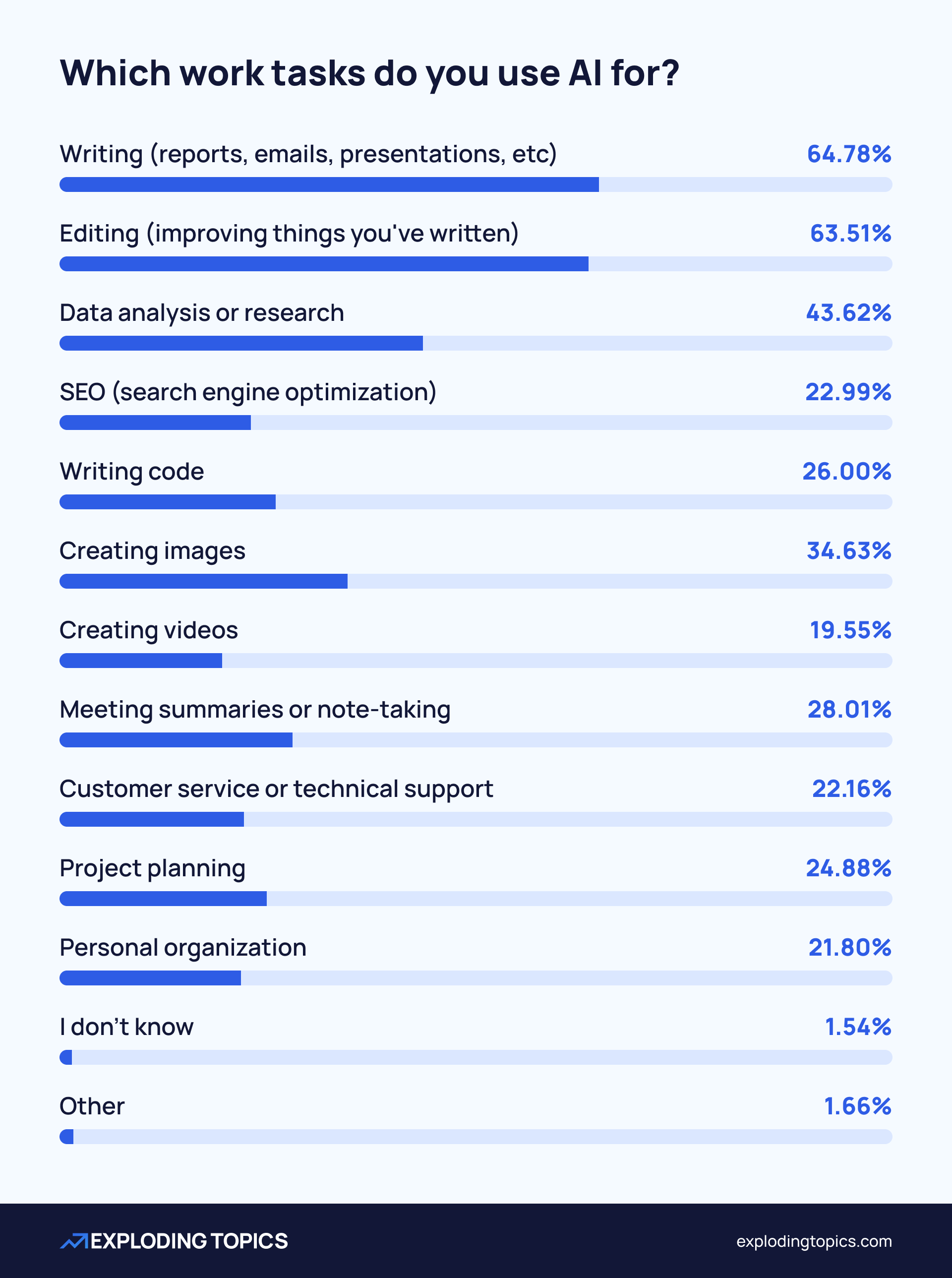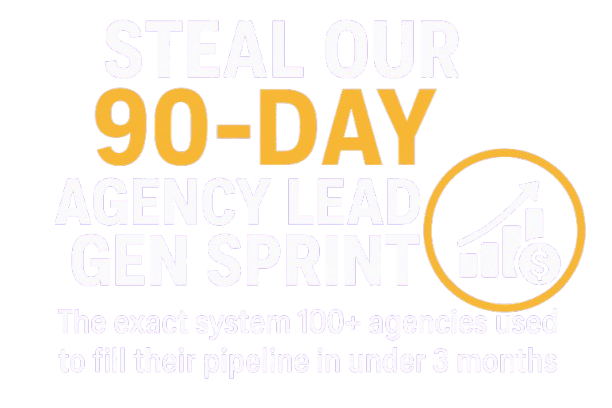
Here's the brutal truth: when clients don't see your value, they're already halfway out the door. They're questioning every invoice, pushing back on timelines, and probably shopping around for cheaper alternatives. But here's what most agency owners get wrong: they think the solution is to work harder or cut prices.
Wrong move.
The real fix requires a complete shift in how you position, communicate, and deliver your services. I'm going to walk you through exactly how to turn value-blind clients into raving fans who see you as indispensable.
Stop Playing Defense and Start Leading
First, let's identify what value blindness actually looks like. Your clients are exhibiting classic symptoms: they delay providing you with necessary information, constantly ask "why does this cost so much?", expect immediate responses to non-urgent requests, or they've started micromanaging your process.
This isn't about them being difficult clients: this is about you failing to establish proper value communication from day one.
Here's your immediate action plan: Audit your current client communication. Go through your last five client interactions and identify where you're being reactive instead of proactive. Are you simply responding to their requests, or are you leading the conversation with strategic insights?

The Value Reset Framework
Step 1: Reestablish Goals Together
Stop assuming you know what your clients actually want. Schedule a strategic alignment call with each at-risk client within the next two weeks. Here's your script framework:
"I want to make sure we're completely aligned on what success looks like for you. When you hired us, what were the top three business outcomes you were hoping to achieve?"
Write down their actual words: not what you think they meant. Then connect every piece of work you do back to these specific outcomes. When you send status updates, lead with impact on their goals, not task completion.
Step 2: Create Expectation Containers
Set clear boundaries around communication and urgency levels. Here's what you're going to implement immediately:
- Establish response time commitments (24 hours for routine, 4 hours for urgent)
- Define what constitutes an actual emergency
- Create a communication preference guide (email for updates, calls for strategic decisions)
- Set up regular check-in schedules so they don't feel ignored
Document this in a simple one-page "Working Together" guide and send it to every client.
Step 3: Shift from Task-Doer to Strategic Partner
This is where most agencies fail. You're executing tasks instead of solving business problems. Here's how to make the shift:
Review your client's business model and identify three operational inefficiencies you can help them solve beyond your core services. Present these as strategic recommendations during your next meeting.
For example: "I noticed your team is manually tracking expenses in spreadsheets. Based on your growth trajectory, this is going to become a major bottleneck. Here are three solutions that would save you 10 hours per month."

The Proactive Value Demonstration System
Weekly Value Summaries
Every Friday, send each client a brief summary that includes:
- Key accomplishments tied to their stated goals
- One strategic insight or recommendation
- Next week's priorities and expected outcomes
- One industry trend or opportunity relevant to their business
This takes 10 minutes per client but positions you as a strategic thinker, not just a service provider.
Monthly Strategic Deep-Dives
Schedule 30-minute monthly calls focused entirely on their business strategy. Come prepared with:
- Performance analysis tied to their goals
- Competitive intelligence relevant to their market
- Strategic recommendations based on your expertise
- Process improvements that could increase their efficiency
The "Success Celebration" Protocol
When your clients achieve wins: revenue milestones, successful campaigns, operational improvements: acknowledge it immediately. Send a congratulations note that connects their success to the work you've been doing together.
This reinforces that you're invested in their outcomes, not just completing deliverables.
Creating Indispensable Positioning
Become Their Industry Intelligence Hub
Start curating and sharing relevant industry insights weekly. Not generic blog posts: specific intelligence that applies to their business model and market position.
Set up Google Alerts for their industry keywords, their competitors, and relevant business trends. Spend 15 minutes each morning scanning for insights you can share.
Develop Proprietary Processes
Create and name your unique methodologies. Instead of saying "we'll manage your social media," say "we'll implement our Engagement Acceleration Framework."
Document your processes, give them names, and explain why your approach delivers superior results. This makes you harder to replace because competitors can't easily replicate your "proprietary" methods.

Position Yourself as the Catalyst
Instead of saying "here's what we did," say "here's how we helped you achieve this." The language shift is subtle but powerful. You're not just executing: you're enabling their success.
The Client Education Strategy
Many clients don't understand the complexity and value of what you do because you haven't educated them properly. Here's how to fix this:
Create Process Transparency
Develop simple visual explanations of your workflow that show the thinking and strategy behind each step. When clients understand the complexity, they appreciate the value.
Share Your Decision-Making Process
When making strategic recommendations, explain your reasoning: "Based on your Q3 performance data and competitive analysis, here's why I recommend focusing on customer retention over acquisition."
This demonstrates expertise and builds trust in your judgment.
Provide Context for Industry Benchmarks
Regularly share how their performance compares to industry standards: "Your engagement rate is 40% above industry average: here's why that matters for your revenue goals."
The Difficult Conversation Protocol
Sometimes clients are genuinely not a good fit, and that's okay. Here's how to handle the "we don't see the value" conversation:
First, Diagnose the Real Issue
Ask directly: "Help me understand where you feel we're not delivering value." Listen without defending. Often, it's a communication or expectation issue, not a performance problem.
Present the Value Case
Prepare a summary of concrete results you've delivered tied to their business outcomes. Include metrics, improvements, and strategic wins.
Offer Solutions or Part Ways Professionally
If there's a genuine misalignment, it's better to part ways professionally than to compromise your value. Say: "It sounds like we might not be the right fit for what you need right now. Let me recommend some alternatives that might be better aligned."
This maintains your professional reputation and often leads to future referrals.
Making It Sustainable
Document Everything
Create templates for value communications, strategic recommendations, and client education materials. This makes consistent value demonstration scalable across your client base.
Train Your Team
Ensure everyone on your team understands how to communicate value, not just complete tasks. Regular training on client communication and strategic thinking is essential.
Measure Value Perception
Quarterly, ask clients directly: "On a scale of 1-10, how valuable do you find our services?" Anything below an 8 needs immediate attention.
The reality is that clients who don't see your value will leave eventually. But most value perception problems are fixable with the right communication strategy and service positioning.
Start implementing these changes immediately with your highest-risk clients. The goal isn't just to retain them: it's to transform them into advocates who see you as essential to their success.
Remember: you're not just a service provider. You're a strategic partner who happens to deliver specific services. Make sure your clients see the difference.
